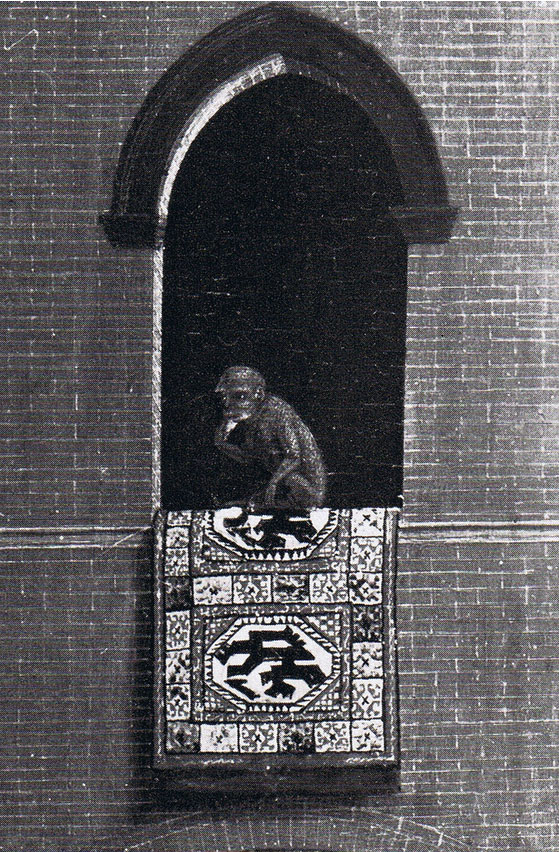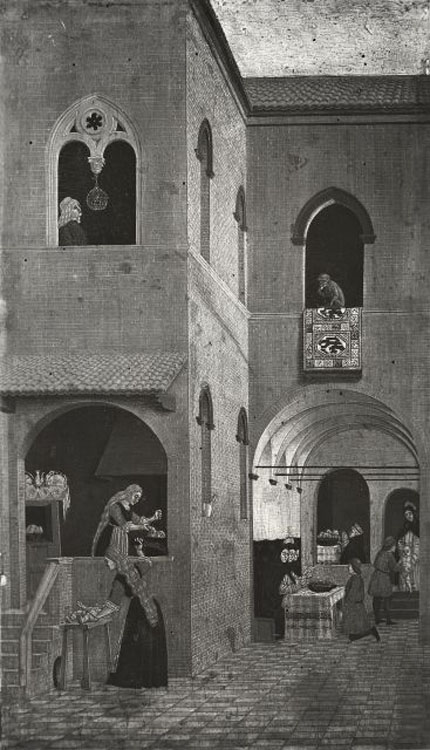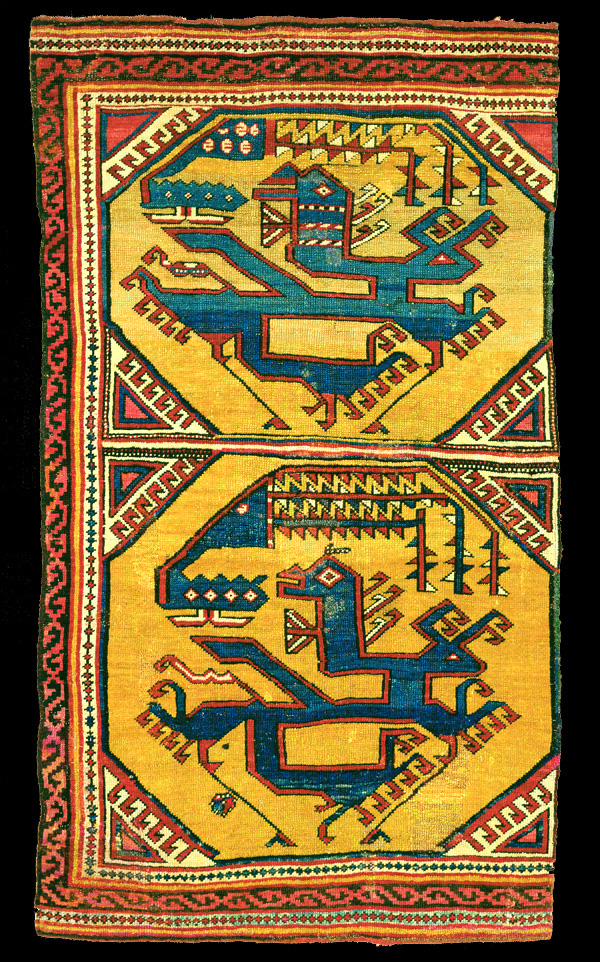|

Artist: Bartolomeo degli Erri (Modena, act. 1460-79)
Scenes from Life of St. Vincent Ferrer,ca. circa 1460,
Vienna, Kunsthistorisches Museum

Holding Museum:
Museum of Islamic Art at the Pergamon Museum Berlin, Germany
Original Owner:
Museum of Arts and Crafts, Berlin
Museum Inventory Number:
I. 4
Dimensions:
Length 172 cm, width 90 cm
Material(s) / Technique(s):
Wool, knotted.
Date of the object:
Hegira mid-9th / mid-15th century
Period / Dynasty:
Ottoman
Provenance:
Turkey .
Description:
This fragmented carpet is one of the most important
animal-carpets of the early Ottoman period that have become known to the
present day. Two highly stylised animals, a dragon and a phoenix, are
depicted fighting, against a yellow background and within two octagonal
spaces. The phoenix is swooping down onto the dragon from above. The image
is clearer in the lower octagonal casing than in the upper. The outer
border is composed of semi-palmette tendrils, which are framed on both
sides by an edging of little rosettes. The original border appears to be
missing on both the left and right sides. It is possible that the carpet
was originally wider in shape, featuring a greater number of octagonal
compartments. This would make it more akin to the animal-carpets that were
reproduced in paintings. The dragon and phoenix motif, which originated in
China – where yellow was considered to be the colour of the sovereign –
was introduced into Islamic art in the AH 7th / AD 13th century with the
arrival of the Mongols, as is demonstrated by its ubiquitous presence on a
number of works of art, made in a variety of materials.
Animal-carpets often appear in the paintings of Italian artists, but only
a few of the actual pieces survived. The painter Domenico di Bartolo
depicted a similar dragon-phoenix carpet in his fresco ‘The Wedding of the
Foundlings’, which he painted in the Spedale della Scala in Siena in
1440–4. An animal-carpet featuring stylised birds on trees was found in a
church in Sweden. The wide distribution of animal-carpets in Europe
demonstrates that they were among the early types of carpets to be
exported to Europe from the Ottoman Empire. This carpet allegedly comes
from a church in central Italy and, from the results of Carbon-14
analysis, is dated to be from the AH mid-9th / AD mid-15th century.
How object was obtained:
Acquired in Rome by Wilhelm von Bode in
1886 and bought by the Museum of Arts and Crafts, Berlin. Given on loan to
the Museum of Islamic Art in 1906, after which it was included in the
Museum’s inventory.
How date and origin were established:
Carbon-14 analysis has dated the carpet to the mid-9th / mid-15th century.
How provenance was established: The
carpet’s Turkish knot and its unique motifs and colours place it within
the Ottoman era.
Selected bibliography:
Bode, W. v., Vorderasiatische Knüpfteppiche aus
älterer Zeit, Leipzig, 1901, p.109.
Enderlein, V., Wilhelm von Bode und die Berliner Teppichsammlung, Berlin,
1995, p.23, no. 9, p.29, pl. 9.
Erdmann, K., Die Geschichte des Frühen Türkischen Teppichs, London, 1977,
pp.56–7, ill. 52.
Rageth, J., “Dating the Dragon & Phoenix Fragments”, Halı 134, 2004,
pp.106–109.
The Eastern Carpet in the Western World from the 15th to the 17th century,
London, 1983, p.49, cat. no. 1, p.34, fig. 1.
Source: [http://www.discoverislamicart.org/database_item.php?id=object;ISL;de;Mus01;34;en&cp] |





